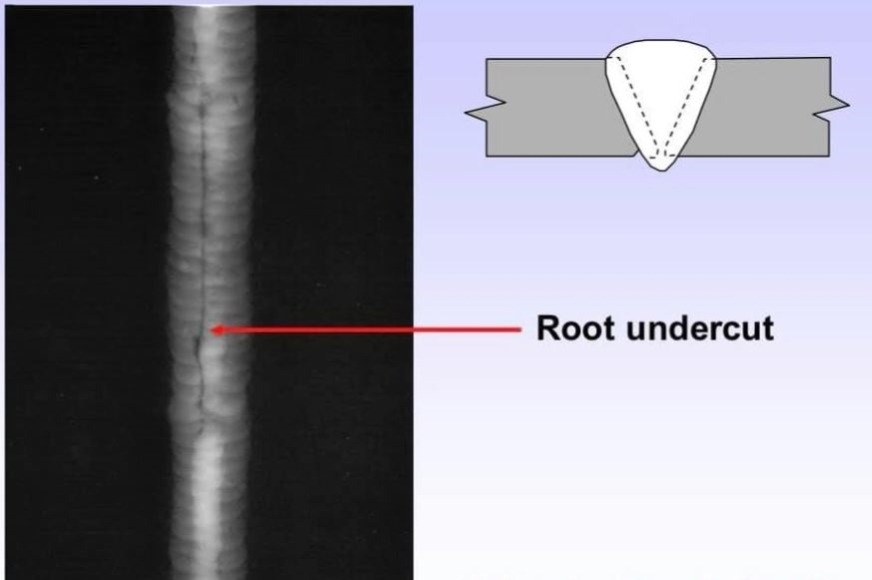Best Practices for Preventing Weld Undercut: Mastering the Basics
Best Practices for Preventing Weld Undercut: Mastering the Basics
Blog Article
A Comprehensive Overview to Identifying, Stopping, and Mending Undercut Welding Issues in Your Welding Projects
In the world of welding, coming across undercut concerns is a typical difficulty that can jeopardize the structural integrity and total quality of your welding tasks. Keep tuned as we explore the important components of recognizing, preventing, and taking care of undercut welding problems, giving you with important understandings and methods to raise your welding abilities to the next level.
Usual Sources Of Undercut Welding
Undercut welding, an usual problem in welding procedures, can be triggered by various aspects that need to be very carefully determined and resolved to make sure the honesty of the weld joint. One of the main sources of undercut welding is too much heat input. When the welding criteria, such as voltage, present, or travel speed, are not effectively set, an extreme quantity of warmth can be generated. This excess heat results in the melting and succeeding removal of the base product along the edges of the weld joint, developing a groove called undercut.
One more typical cause of undercut welding is improper welding method. Determining these root causes and executing rehabilitative steps is essential in stopping and rectifying undercut welding issues in welding jobs.
Identifying Undercut in Welds

To determine undercut properly, correct illumination and magnifying devices are vital to evaluate the weld joint thoroughly. Using tools such as a welding gauge or a magnifying glass can help in finding even the smallest undercut blemishes. Additionally, running a finger or a fingernail along the weld joint can often disclose undercut, as the surface area might really feel uneven or have a dip where the undercut exists.
Safety Nets for Undercut
Having a deep understanding of the reasons of undercut in welds enables for the execution of efficient precautionary steps to keep weld high quality and honesty. These setups ought to be maximized to avoid excessive heat input, which can lead to damage formation.

Techniques for Taking Care Of Undercut

To attend to undercut issues efficiently, welders can utilize certain strategies focused on rectifying the flaw and restoring the stability of the weld joint. One strategy is to readjust the welding criteria, such as the voltage, present, and take a trip rate, to ensure proper warm input and combination. Increasing the welding current or lowering the travel speed can help fill up in the undercut. Additionally, altering the welding method from a push to a drag or the other way around can likewise assist reduce undercut.
Another method is to utilize a weaving activity while welding to make sure correct sidewall combination and fill in the undercut. By oscillating the welding arc back and forth within the weld joint, the welder can transfer much more filler material into more information the undercut areas, efficiently eliminating the issue.
Furthermore, grinding out the undercut and rewelding the joint can be a feasible solution for much more extreme undercut problems - Preventing weld undercut. This process entails getting rid of the undercut section, preparing the base steel, and afterwards rewelding the joint with proper welding parameters and strategies to stop undercut from persisting

Expert Tips for Avoiding Undercut
Utilizing proper welding methods and maintaining control over key welding parameters are crucial techniques for welders aiming to prevent undercut in their weld joints. One expert pointer for staying clear of undercut is to make certain appropriate joint preparation. This involves cleaning the base steel extensively to eliminate any impurities that can cause undercut development. Furthermore, picking the proper welding procedure and filler metal for the particular application can aid protect against undercut. Welders need to additionally pay very close attention to the welding present and voltage settings, guaranteeing they are within the recommended range to stay clear of overheating and potential undercut. Preserving a consistent traveling speed throughout the welding process is another essential idea to stop undercut. By relocating at a stable rate, welders can make sure proper combination and reduce the probability of undercut formation. Last but not least, checking the weld bead after completion can assist identify any type of signs of undercut early, permitting prompt corrective action to be taken.
Final Thought
Finally, recognizing, preventing, and dealing with undercut welding troubles in your welding tasks is crucial for ensuring strong and long lasting welds. redirected here Preventing weld undercut. By comprehending the common reasons of undercut, being able to determine it in welds, executing preventive measures, and utilizing proper strategies for fixing undercut, you can stay clear of possible issues and create high-grade welds. Following specialist tips for avoiding undercut can help you boost your welding skills and produce better lead to your projects
Undercut continue reading this welding, an usual problem in welding procedures, can be created by different elements that require to be very carefully determined and addressed to ensure the honesty of the weld joint. Furthermore, running a finger or a fingernail along the weld joint can sometimes disclose undercut, as the surface might really feel uneven or have a dip where the undercut exists.
Making use of appropriate welding strategies and preserving control over essential welding criteria are important strategies for welders intending to stop undercut in their weld joints.In conclusion, determining, preventing, and repairing undercut welding issues in your welding projects is vital for ensuring strong and resilient welds. By comprehending the usual causes of undercut, being able to recognize it in welds, executing precautionary actions, and utilizing correct techniques for taking care of undercut, you can stay clear of potential problems and develop top quality welds.
Report this page